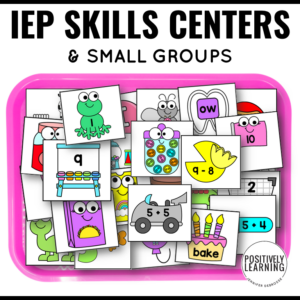
Accommodations vs Modifications. Although these special education terms may be used in the same conversation between team members at the IEP meeting table, they are VERY different things! It’s important to understand the difference between the two and the impacts they have on an individual student receiving specialized services.
In this blogpost, you'll see both definitions and examples of accommodations and modifications. This may be helpful to bookmark and save for later or share with your school district.
When a student is receiving specialized instruction, you are most likely going to see accommodations provided for them.The purpose of accommodations in the learning environment is to give students equal access to the opportunities that the rest of the class has. Students are still held to grade level standards in the regular course of study. Accommodations may be provided for general classroom work and/or for standardized testing.
Some examples of classroom accommodations include…
Sometimes an IEP team may determine that a student requires more than just an accommodation to the curriculum in order for them to have equal access to it. Modifications may be appropriate in order to meet the needs of the child.
Some examples of modifications include…
It can be difficult at times to determine whether an accommodation or modification is most appropriate in order to meet a student’s need. It is best to always ask as the IEP team if there are supports that can be put into place first that allow students to access the grade level material in the same way as their peers.
Who provides the accommodations and modifications?
Once appropriate accommodations have been determined, they will be “officially” added to the students' current IEP (Individualized Education Program). This is important to note because as a legal document, the IEP serves as a layer of protection that each child will receive the accommodations they need regardless of classroom setting. Although more specific notes may be added to the IEP, accommodations can be administered by both the general education teacher and special education teacher.
One of the most common misunderstandings educators have when it comes to special education services is defining accommodations versus modifications.
Looking for an easy way to support your school or staff with understanding the difference between the two? Check out this interactive professional development resource!
You’ll find an easy to follow slideshow that can be used during a professional development session with your cooperating teachers. There's even an “activity” with examples of accommodations and modifications to sort. This entire ready-to-deliver professional presentation is inside the Special Educators Resource Room Bundle.

I’m Jennifer and I was a special educator in the elementary school setting over the past decade. I entered the classroom every day dedicated to making learning inclusive AND engaging.
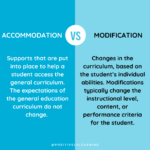
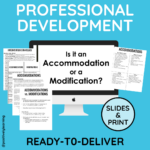
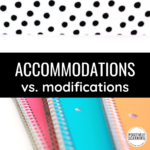
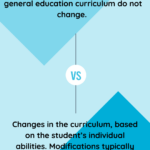
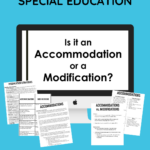

This website uses cookies to ensure you get the best experience on our website. See full disclosure here.
This website uses cookies to ensure you get the best experience on our website.
See full disclosure here.
